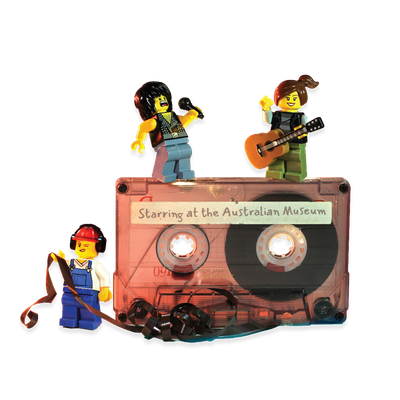Your search returned 12447 results
By Page Type
By Tag
- fish (966)
- blog (696)
- fishes of sydney harbour (401)
- First Nations (299)
- Blog (236)
- AMRI (169)
- archives (164)
- Eureka Prizes (146)
- Aboriginal and Torres Strait Islander (135)
- insect (126)
- Ichthyology (124)
- geoscience (109)
- minerals (102)
- climate change (99)
- podcast (94)
- Fish (91)
- Anthropology (89)
- International collections (80)
- Minerals Gallery (78)
- wildlife of sydney (78)
- Labridae (77)
- frog (74)
- gemstone (70)
- photography (66)
- history (64)
- Mollusca (60)
- gem (59)
- staff (59)
- Birds (56)
- Gems (56)
- Indonesia (56)
- education (56)
- shark (55)
- AMplify (54)
- people (53)
- earth sciences (50)
- exhibition (50)
- past exhibitions (50)
- Gobiidae (48)
- sustainability (46)
- Pomacentridae (45)
- Serranidae (44)
- lifelong learning (42)
- science (42)
- Earth and Environmental Science (41)
- Syngnathidae (41)
- Ancient Egypt (40)
- Bali (40)
- bird (40)
- dangerous australians (40)
-
Black-faced Monarch
https://australian.museum/learn/animals/birds/black-faced-monarch/Like other monarchs and flycatchers, the Black-faced Monarch has bristles around its bill to help it catch insects.
-
Black-faced Cuckoo-shrike
https://australian.museum/learn/animals/birds/black-faced-cuckoo-shrike/Cuckoo-shrikes are neither cuckoos nor shrikes, but are so called becaues their feathers have similar patterns to those of cuckoos and their beak shape resembles that of shrikes.
-
Black-breasted Buzzard
https://australian.museum/learn/animals/birds/black-breasted-buzzard/Black-breasted Buzzards use stones to open eggs by picking up and dropping a stone onto the egg until it breaks.
-
Black Honeyeater
https://australian.museum/learn/animals/birds/black-honeyeater/Black Honeyeaters, especially females, often eat charcoal and ash at old camp-fire remains.
-
Black Currawong
https://australian.museum/learn/animals/birds/black-currawong/The Black Currawong was widely eaten in the early days of European settlement in Tasmania and said to be quite tasty.
-
Black Bittern
https://australian.museum/learn/animals/birds/black-bittern/Black Bitterns are seen in daylight more often than other bitterns.
-
Bell Miner
https://australian.museum/learn/animals/birds/bell-miner/Bell Miners are strongly associated with psyllid (tiny insects that feed on leaves) infestations in gum trees Eucalyptus (causing the disease called 'dieback') and may even actively farm psyllids as a food source.
-
Australian Raven
https://australian.museum/learn/animals/birds/australian-raven/There are three species of raven in Australia, and three crows. Ravens are generally bigger than crows, but other differences - e.g. range, calls - are more reliable for identifying which species is which.
-
Australian Pratincole
https://australian.museum/learn/animals/birds/australian-pratincole/The Australian Pratincole is also known as 'Roadrunner'. On the ground, it is like a plover, running and darting along on its long legs catching insects. However, in flight it is more like a tern, flying elegantly with long, narrow wings.
-
Australian Magpie
https://australian.museum/learn/animals/birds/australian-magpie/Magies are one of Australia's most highly-regarded songbirds. They have a wide varierty of calls, many of which are complex, and their pitch may vary over up to four octaves.
-
Discover more
2025 Australian Geographic Nature Photographer of the Year
Special exhibition
Free entry
Now open -
Discover more
Unfinished Business
Special exhibition
Free entry
Now open -
Discover more
Wansolmoana
Permanent exhibition
Free entry
Open daily -
Find out more
Burra
Permanent kids learning space
Free entry
10am - 4.30pm![]()
-
Discover more
Minerals
Permanent exhibition
Free entry
Open daily![]()




